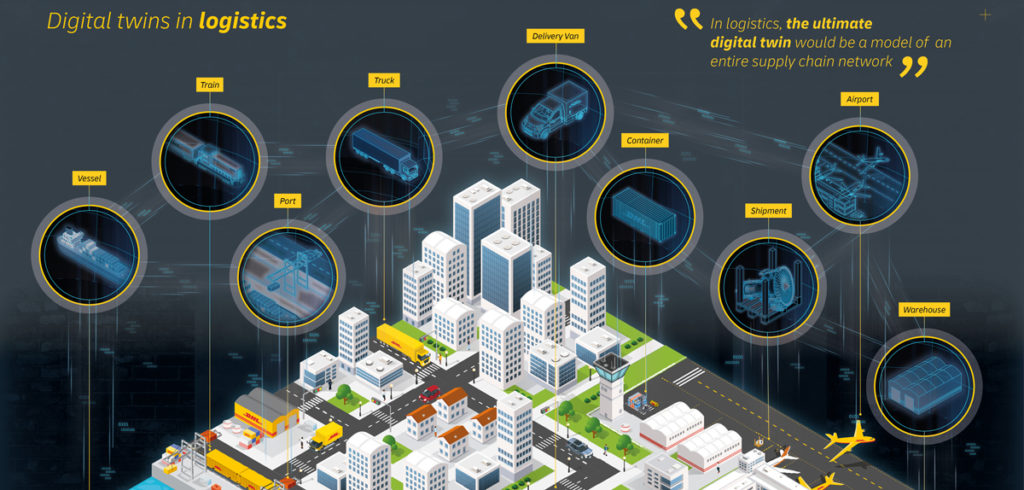The concept of digital twinning is seeing widespread adoption in industrial sectors such as manufacturing, but its benefits for logistics operations are only starting to become apparent. In a review of how wireless technologies look set to revolutionize the post and parcel industry, titled Next-Generation Wireless in Logistics, DHL identified digital twinning as an area ripe for growth.
In essence, a digital twin is a real-time model of a system, providing a virtual representation of physical assets that allows for management, and operation, of both the digital and physical asset as one. Digital twins have revolutionized the aerospace, manufacturing, engineering and energy sectors, streamlining the design, development, production and management of all aspects of a physical product throughout its lifecycle.
In the logistics industry, development of digital twins of complex supply chain infrastructure, such as ports and large warehouses, is still in its early stages. However, major ports around the world, including Singapore and Rotterdam, Netherlands, are turning to digital twins to design, plan and manage their operations.
Having a digital twin of, for example, a warehouse facility, has the potential to greatly increase operating efficiency. Each process that takes place in a facility and every piece of equipment would be mirrored in the digital twin, providing a constant stream of operational data. The benefits are many: inefficiencies in the flow of packages can be quickly identified, or maintenance issues with machinery can be caught before they have an impact on throughput.
DHL identified three main challenges in the advancement of digital twins in logistics; cost, precise representation (of assets), and data quality. Next-generation wireless and 5G could provide solutions to the latter two challenges. Precise representation of digital twins is dependent on real-time connectivity between the physical asset and its virtual representation.
Given the complexity of modern warehouses and increasingly automated logistics facilities, collecting, transferring and visualizing the data in a dynamic virtual model has been limited by the capabilities of existing wireless networks. Now, with the ultra-low latency and enhanced broadband of 5G, this problem could eventually be eliminated.
In terms of data quality, digital twins today must gather data from a host of sources, both traditional IT systems as well as an array of sensors in the physical world. These could be RFID tagged packages, AVGs (automated guided vehicles) or Bluetooth-enabled pallets. These all need to be coordinated and harmonized through a single, high-speed wireless network, which DHL envisages will be based on 5G.


